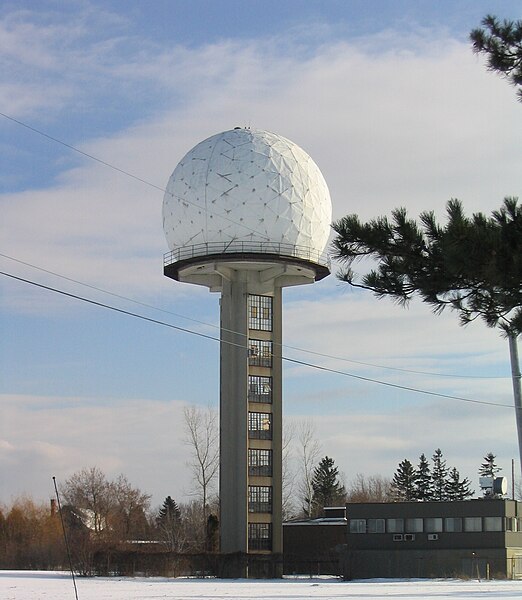Canadian weather radar network
The Canadian weather radar network consists of 33 weather radars spanning Canada's most populated regions. Their primary purpose is the early detection of precipitation, its motion and the threat it poses to life and property.
Tower and radome of McGill radar (CWMN).
Villeroy radar (a WSR-98E), 75 km southwest of Quebec City : tower and radome to the left, transmitter and receiver in the building on the right.
Station CXSS (a WSR-98A) at Silver Star Mountain.
Station CXLA, a WSR-98R, of Landrienne in June 2019 with the base of its replacement in front.
Weather radar, also called weather surveillance radar (WSR) and Doppler weather radar, is a type of radar used to locate precipitation, calculate its motion, and estimate its type. Modern weather radars are mostly pulse-Doppler radars, capable of detecting the motion of rain droplets in addition to the intensity of the precipitation. Both types of data can be analyzed to determine the structure of storms and their potential to cause severe weather.
Weather radar in Norman, Oklahoma with rainshaft
Weather (WF44) radar dish
Typhoon Cobra as seen on a ship's radar screen in December 1944.
1960s radar technology detected tornado producing supercells over the Minneapolis-Saint Paul metropolitan area.








